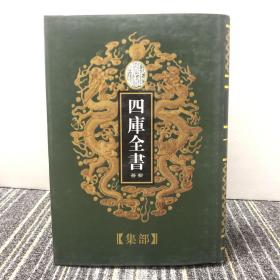
英语测评:理论与实践=English Language
正版现货 可开具图书发票 下单后当天即可发货
¥ 33.47 6.7折 ¥ 50 全新
库存2件
山西太原
认证卖家担保交易快速发货售后保障
作者杨香玲
出版社南京大学出版社有限公司
ISBN9787305242960
出版时间2020-03
装帧平装
开本16开
定价50元
货号11247005
上书时间2024-12-12
- 在售商品 暂无
- 平均发货时间 5小时
- 好评率 暂无
- 店主推荐
- 最新上架
商品详情
- 品相描述:全新
- 商品描述
-
作者简介
杨香玲,天水师范学院外国语学院教授,硕导。主持并完成国家基础教研项目3项,甘肃省教育规划项目2项,高教社和外研社英语教改项目2项,甘肃省教育厅项目4项,参与教育部大英教改项目1项,甘肃省社科规划项目1项;在期刊上发表学术论文38篇;出版《英语教学技能应用指导》等专著两部,参编教材1部;学术成果获甘肃省社科成果二等奖两项,社科优秀成果二等奖2项,其他奖8项。研究方向为英语教学法和英语测评研究。
目录
Part I Theory of Language Assessment
Chapter One An Introduction to Language Assessment
1.1 The Relationship among Testing, Assessment, and Teaching
1.1.1 What is testing?
1.1.2 Testing and teaching
1.1.3 Assessment and teaching
1.2 Approaches to Language Assessment
1.2.1 Approaches to language testing
1.2.2 Approaches to non-testing assessment
1.2.3 Differences between testing assessment and non-testing assessment
1.3 Purpose of Assessment
1.3.1 Purpose of testing assessment
1.3.2 Purpose of non-testing assessment
1.4 A Look at the Current Large-Scale Tests at Home and Abroad
1.4.1 PETS (Public English Test System)l--5
1.4.2 CET(College English Tests)
1.4.3 TEM(Test for Enghish Majors)
1.4.4 TOEFL(Test of English as a Foreign Language)
1.4.5 IELTS(The International English Language Testing System)
Chapter Two Types of Assessment
2.1 Types of Testing Assessment
2.1.1 Tests classified by purposes
2.1.2 Tests classified by ways of testing
2.1.3 Testing classified by language measuring forms
2.1.4 Testing classified by score interpretation
2.1.5 Testing classified by scoring methods
2.1.6 Testing classified by test influence
2.1.7 Other test categories
2.2 Types of Non-testing Assessment
2.2.1 Diagnostic assessment
2.2.2 Authentic assessment
2.2.3 Formative assessment
2.2.4 Sizing up assessment
2.2.5 Instructional assessment
Chapter Three Principls of Assessment
3.1 Validity
3.1.1 Definition of validity
3.1.2 Features of validity
3.1.3 Types of validity
3.1.4 Factors affecting test validity
3.1.5 Methods making tests more valid
3.2 Reliability
3.2.1 Definition of reliability
3.2.2 Types of reliability
3.2.3 Reliability coefficient and obtaining methods
3.2.4 Methods making tests more reliable
3.2.5 The relationship between validity and reliability
3.3 Backwash
3.3.1 Introduction to backwash
3.3.2 How to achieve beneficial backwash?
3.4 Practicality
3.5 Authenticity
Chapter Four Stages of Test Development
4.1 Thinking Stage--Stating the Test Problems
4. 2 Developing Stage--Providing a Solution to the Problems
4.2.1 Drawing up test specifications
4.2.2 Writing items
4.3 Implementing Stage
4.3.1 Administering
4.3.2 Scoring and giving feedback
Part Two Testing Assessment
Chapter Five Assessing Listening
5.1 Nature of Listening
5.1.1 Definition of listening
5.1.2 Characteristics of listening
5.1.3 Factors affecting listening
5.1.4 Types of listening
5.1.5 Difficulties in listening teaching
5.2 Constructing Listening Test
5.2.1 Specifying all possible contents
5.9.2 Setting the tasks
5.3 Scoring Listening Tests
Chapter Six Assessing Speaking
6.1 Nature of Speaking
6.1.1 Definition of speaking
6.1.2 Importance of speaking ability
6.1.3 Features of spoken English
6.1.4 Constitutive elements of spoken English
6.1.5 Difficulties in testing speaking skills
6.2 Constructing Speaking Test
6.2 . 1 Specifying all possible contents
6.2.2 Choose appropriate techniques
6.2.3 Suggestions for the tester on planning and conducting speaking test
6.2.4 Tips for the test
6.2.5 Four stages of training the interviewers
6.3 Ensure Valid and Reliable Scoring
6.3.1 Principles of scoring
6.3.2 Approaches to scoring
6.3.3 Training of scorers
Chapter Seven Assessing Reading
7.1 Nature of Reading
7.1.1 Definition of reading
7.1.2 Models of reading
7.1.3 Strategies of reading
7.1.4 Factors affecting reading
7.2 Constructing Reading Test
7.2.1 Specifying all possible contents
7.2.2 Setting the tasks
7.2.3 Procedures for writing items
7.2.4 Practical suggestions on item writing
7.3 Scoring
Chapter Eight Assessing Writing
8.1 The Nature of Writing
8.1.1 Definition of writing
8.1.2 Nature of writing ability
8.1.3 Questions to be answered before writing test
8.1.4 Methods for writing test
8.2 Constructing Writing Test
8.2.1 Setting representative tasks
8.2.2 Eliciting a valid sample of writing ability
8.3 Ensuring Reliable Scoring
8.3.1 Setting tasks reliably to be scored
8.3.2 Creating appropriate scales for scoring
8.3.3 Conducting scoring
Part III Assessment without Test
Chapter Nine Observation and Portfolios
9.1 Observation in the Classroom
9.1.1 Definition of observations
9.1.2 Purpose of classroom observation
9.1.3 Guidelines to plan classroom observation
9.1.4 Observation loci
9.1.5 Steps to carry out classroom observation
9.1.6 Forms and methods of observation
9.1.7 Observation sheet
9.2 Portfolios
9.2.1 Definition and materials of portfolio
9.2.2 The benefits of portfolio
9.2.3 Purposes of portfolio assessment
9.2.4 Types of portfolio assessment
9.2.5 Features of portfolio assesment
9.2.6 Steps and guidelines to develop successful portfolio
9.2.7 Principles of portfolio assessment
9.2.8 Portfolio criteria--cycle two ~ three
Chapter Ten Performance-based Assessment, Journals and Conference
10.1 Performance-based Assessment
10.1.1 The definition of performance-based assessment
10.1.2 The purpose of performance-based assessment
10.1.3 Features of performance assessment
10.1.4 Designing performance tasks
10.1.5 Defining the assessment criteria and creating performance rubrics
10.2 Journals
10.2.1 Definition of journal
10.2.2 Functions and drawbacks of journal
10.2.3 Benefits of journal
10.2.4 Features of journals
10.2.5 Types of journals
10.2.6 General steps and guidelines to develop journals
10.3 Conferences
10.3.1 Advantages of conferences
10.3.2 Functions and subject matter of conferences
10.3.3 Guidelines for conducting a conference
Chapter Eleven Interviews and Questionnaires
11.1 Introduction to Interviews and Questionnaires
11.2 Organization of Interviews and Questionnaires
11.3 Questionnaires versus Interviews
11.4 Guidelines for Constructing Questionnaires and Interviews
11.4.1 Constructing questionnaires and interviews
11.4.2 Planning questionnaires and interviews
11.4.3 Devising questionnaire and interview items
Chapter Twelve Self-assessment and Peer-assessment
12.1 Introduction to Self-assessment and Peer-assessment
12.1.1 Self-assessment
12.1.2 Peer-assessment
12.2 Types of Self-assessment and Peer-assessment
12.2.1 Direct assessment of a specific performance
12.2.2 Indirect assessment of general competence
12.2.3 Metacognitive assessment (for setting goals)
12.2.4 Socioaffective assessment
12.2.5 Student-generated tests
12.3 Guidelines for Self-assessment and Peer-assessment
12.3.1 Tell students the purpose of the assessment
12.3.2 Define the task(s) clearly
12.3.3 Encourage impartial evaluation of performance or ability
12.3.4 Ensure beneficial washback through follow-up tasks
12.4 Classification of Self-assessment and Peer-assessment Tasks
12.5 Self-assessment and Peer-assessment Sheet
Bibliography
内容摘要
本书是随着国家英语能力等级量表研发、国家外语能力测评体系建设工作的有序推进,作者针对不断优化的顶层设计之下一线英语教师和英语师范生存在的测评理念陈旧,测评知识缺失,测评技能低下等问题进行深入研究的成果。本书分为三部分。部分测评理论,论述了测评的目的、方法、分类、原则及其开发;第二部分测试性评估,详述了听、说、读、写四项语言技能的测评;第三部分非测试评估,阐述了课堂观察、学习档案袋、学习日志、叙事评价、访谈、学生自评、同伴互评等评估手段。本书着力将抽象的理论用具体的教例呈现出来,将划一的测评规则用操作的方式表现出来,将优选的测评理念用技能的方式外化出来,力求为英语教师提供便于实际应用的测评手册。
精彩内容
随着国家英语能力等级量表研发、国家外语能力测评体系建设工作的有序推进,作者针对不断优化的顶层设计之下一线英语教师存在的测评理念陈旧,测评知识缺失,测评技能低下等问题进行深入研究。本书分为三部分。第一部分测评理论,论述了测评的目的、方法、分类、原则及其开发;第二部分测试性评估,详述了听、说、读、写四项语言技能的测评;第三部分非测试评估,阐述了课堂观察、学习档案袋、学习日志、叙事评价、访谈、学生自评、同伴互评等评估手段。本书着力将抽象的理论用具体的教例呈现出来,将划一的测评规则用操作的方式表现出来,将先进的测评理念用技能的方式外化出来,力求为英语教师提供便于实际应用的测评手册。
相关推荐
— 没有更多了 —


























以下为对购买帮助不大的评价